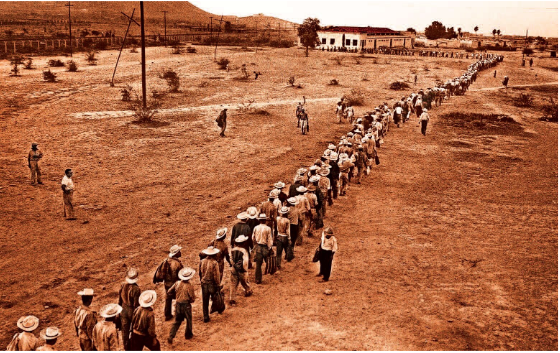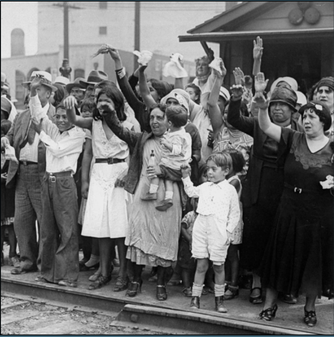|
Mexican immigrants and their children, many of whom were American citizens, were forcibly deported to Mexico during the repatriation program.
|
Braceros worked for extremely low pay and lived in inadequate houses, all while enduring terrible working conditions like the heat and long hours.
|
During the bracero program, the United States brought Mexicans and those of Mexican descent (who had been previously kicked out of the country) back into America to work on farms and compensate for the lack of workers due to World War II.
|
The repatriation program was created in 1930 by the United States and its goal was to reduce the amount of Mexicans and Mexican-Americans living in the U.S. The president at the time, Herbert Hoover, implemented the repatriation program so that Americans could “have more jobs.” Most Mexican-Americans that were being sent away were born and raised in America and had never been to Mexico before. One boy said it as though he was being sent to Mars. The campaigns were very harsh and the government was doing whatever it takes to not have a single person of Mexican descent living in their country. Los Angeles alone had around 35,000 people that were pressured or forced to leave, which was ⅓ of the entire Hispanic population in the city. At the end of the repatriation Program, over 400,000 Hispanic people were deported out of America and sent to Mexico.
After the repatriation program, very few Mexicans and Mexican-Americans lived in California. However, when farmers joined the military during World War II, farms needed people to harvest the crops. To solve this problem, the U.S created the Bracero Program in order to bring immigrants back to the U.S from Mexico after they were deported during the repatriation act. The program successfully brought 4 to 5 million Mexicans to America. These immigrants were called braceros. Unfortunately, they were mistreated and exploited on the farms they worked on. Braceros were paid low wages, forced to work in dangerous conditions, and faced racial discrimination. Even some Mexicans and Mexican-Americans who were forced out of America in the 1930s because of the repatriation program applied for the Bracero Program. Since braceros constantly faced discrimination and weren't allowed proper homes or fair wages, it's obvious how racist America used to be at the time.






